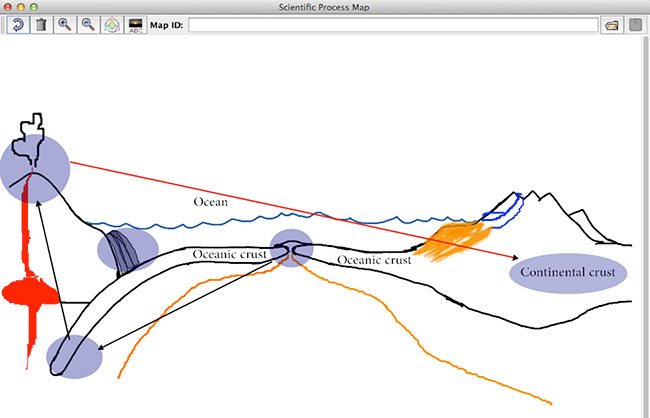The Scientific Process Mapping Program is an interactive journaling tool that provides scaffolding for:
- Documentation of the scientific research process.
- Students to construct and assess their own content knowledge.
- Classroom discussions and presentations.
- Instructors to monitor student learning.
Download the Mapping Program & instructions here
The program is Mac and PC compatible and runs on Java 6 or 7. Download Java here. The software includes the Understanding Science Flowchart (Figure 1). Additionally, the modular program design allows for images to be converted into a clickable template for flowchart creation (Figure 2). Users click the flowchart components to draw arrows through a figure.


Users can create journals that include notes and photos linked to steps in the flowchart. The program allows for saving and editing of flowcharts, and exports flowcharts, notes, photos, and PowerPoint presentations (Figures 3 and 4).


Have questions or comments? Would you like to use the mapping program with your students? Please contact Jessica Bean.
The Scientific Mapping Program is based upon work supported by the National Science Foundation Graduate STEM Fellows in K-12 Education Fellowship Program under DGE Grant No. 0841297 to S.L.Williams and B. Ludaescher. Understanding Science was funded by the National Science Foundation Grant No. EAR-0624436 to the University of California Museum of Paleontology. Any opinions, findings and conclusions or recommendations expressed in this material are those of the author(s) and do not necessarily reflect the views of the National Science Foundation (NSF).
